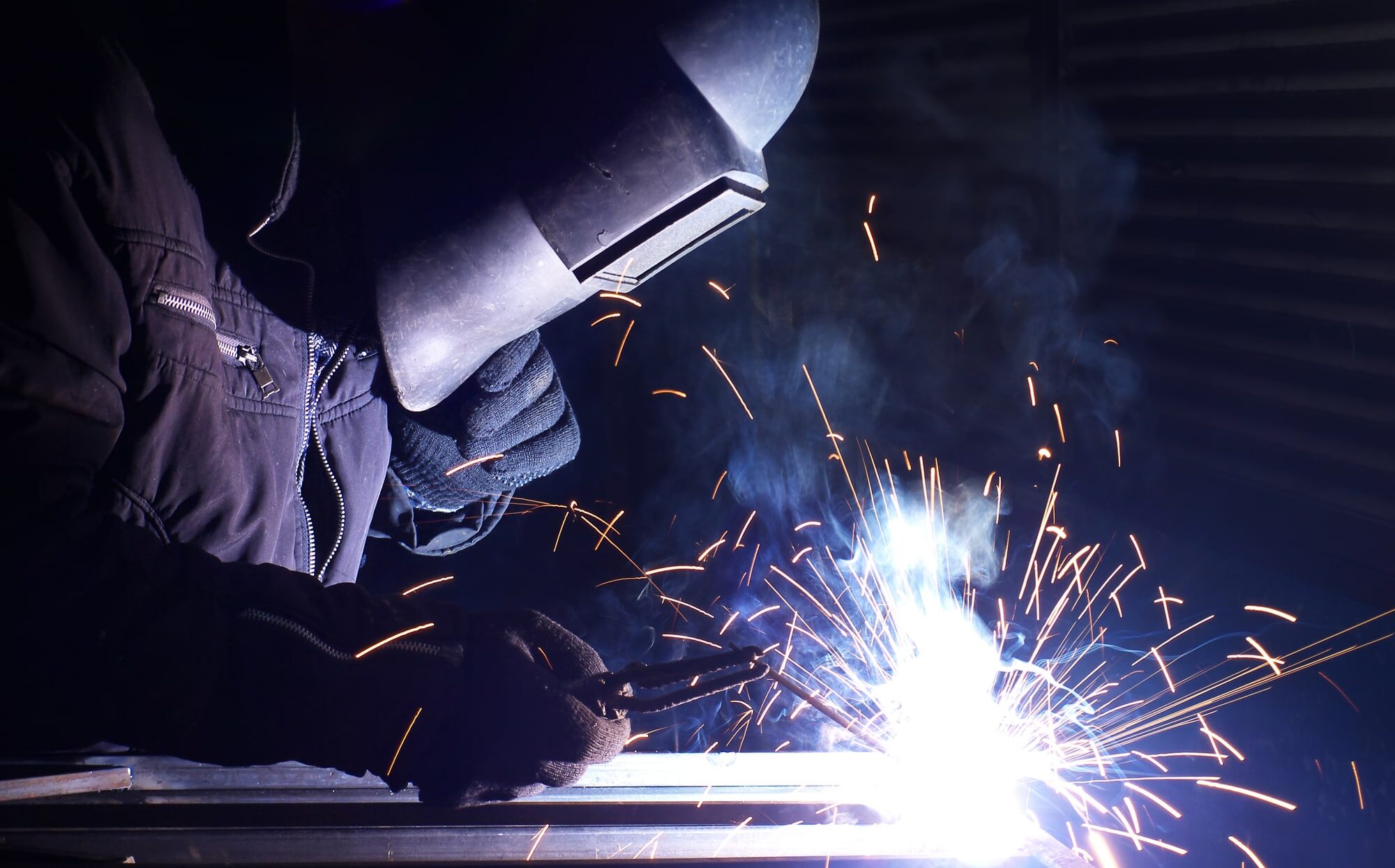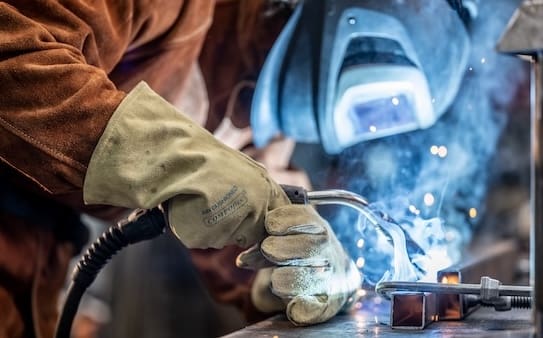All Regarding Welding: Secret Insights Into Techniques and Best Practices for Success
Welding encompasses a selection of methods, each fit for certain materials and applications. Comprehending these methods, such as GMAW, SMAW, and TIG, is necessary for attaining excellent results. In addition, the ideal tools and safety practices can not be overlooked. As preparation and repairing play critical roles in the welding procedure, grasping these elements can considerably enhance the top quality of the final item. What are the key factors that assure an effective weld?
Comprehending Different Welding Techniques
Welding methods include a selection of methods, each suited to particular applications and products. Among the most typical techniques are Gas Metal Arc Welding (GMAW), Shielded Metal Arc Welding (SMAW), and Tungsten Inert Gas Welding (TIG) GMAW, also referred to as MIG welding, is preferred for its speed and flexibility, making it excellent for thin products. SMAW, or stick welding, is favored for its simpleness and efficiency in outside atmospheres, particularly with thicker metals. TIG welding offers precision and control, making it appropriate for complex job and non-ferrous metals (Montana Mobile Welding and Repair Belgrade Fabrication). Each strategy has its unique advantages and considerations, enabling welders to choose the most effective method based upon the project's demands, product type, and preferred end results. Understanding these methods is crucial for successful welding
Vital Welding Equipment and Devices
While various welding methods require details abilities, the ideal devices and tools are similarly important for achieving high quality outcomes. Important welding tools consists of welding devices, which vary relying on the strategy-- such as MIG, TIG, or stick welding. Safety gear, consisting of handwear covers, aprons, and headgears, assurances safety and convenience throughout the process. Additionally, fixtures and clamps aid safeguard products in location, guaranteeing accuracy in welds. Consumables like welding poles, wire, and securing gas are additionally crucial parts that affect the quality of the weld. Tools such as mills and cutters promote surface prep work and post-weld finishing, adding to an expert outcome. Buying high-quality devices inevitably boosts the performance and performance of welding tasks.
Safety Practices in Welding
Appropriate safety and security practices are vital in the welding market to secure employees from potential hazards. Welders must wear suitable individual protective tools (PPE), including safety helmets with appropriate shading, gloves, and flame-resistant apparel. Adequate ventilation is important to minimize direct exposure to unsafe fumes and gases generated during the welding procedure. In addition, employees need to be learnt the proper handling of welding equipment to avoid crashes. Fire security procedures, such as keeping combustible products far from the welding location and having fire extinguishers conveniently available, are necessary. Routine assessments of equipment and work spaces can help recognize prospective risks before they lead to crashes. By sticking to these safety techniques, welders can produce a much safer working setting and lessen risks related to their trade.
Preparing Products for Welding
Preparing materials for welding is a crucial step that considerably influences the quality and integrity of the end product (Fabrication). Correct prep work involves cleaning the surfaces to eliminate pollutants such as corrosion, dirt, and oil, which can compromise the weld. Strategies such as grinding, fining sand, or utilizing solvents are frequently employed to accomplish a tidy surface. In addition, guaranteeing that the materials mesh well is essential; voids can result in weak welds. It's likewise vital to think about the placement and positioning of the elements, as this will affect the convenience of welding and the final outcome. Finally, picking the proper filler product and making sure compatibility with the base metals is necessary for achieving strong, sturdy welds
Tips for Achieving High-Quality Welds
Attaining high-quality welds calls for attention to detail and adherence to finest techniques throughout the welding procedure. Proper joint preparation is essential, guaranteeing surfaces are tidy and totally free from pollutants. Choosing the suitable filler material and welding strategy based on the base steels is vital for perfect bonding. Keeping constant traveling speed and angle while welding can promote and prevent flaws uniformity. Additionally, controlling heat input is important; excessive heat can lead to warping and damaged joints. If necessary, routinely checking the welds throughout the procedure allows for instant changes. Finally, using appropriate post-weld therapies, such as cleansing and stress and anxiety relief, can boost the durability and stability of the weld, eventually guaranteeing a successful end result.
Repairing Usual Welding Issues
Welding frequently provides difficulties that can impact the quality and stability of the last product. Typical problems such as porosity, irregular weld grains, and overheating can occur, each calling for certain repairing techniques. Comprehending these troubles is vital click this link for welders to enhance their abilities and attain excellent results.
Porosity Issues Described
Although porosity can often be ignored, it stays an essential issue in welding that can jeopardize the integrity of an ended up product. Porosity describes the visibility of small gas pockets within the weld bead, which can lead and deteriorate the joint to early failure. This issue normally arises from impurities, wetness, or improper shielding gas protection throughout the welding process. To minimize porosity, welders should confirm that the base materials are clean and dry, utilize proper protecting gases, and maintain regular welding criteria. Frequently evaluating the tools and setting can also help identify potential concerns prior to they show up in the weld. Dealing with porosity successfully is necessary for accomplishing strong, durable welds his comment is here that fulfill top quality standards.

Irregular Weld Beans
Inconsistent weld grains can considerably influence the high quality and strength of a completed product. Various variables add to this concern, including improper traveling rate, wrong amperage setups, and irregular electrode angles. When the welder relocates too quickly, a grain might appear slim and do not have penetration, while moving as well gradually can trigger extreme build-up. Additionally, using the incorrect amperage can cause either undercutting or too much spatter, both of which compromise weld honesty. The welder's technique, such as irregular torch movement, can additionally cause unequal bead look. To alleviate these problems, welders ought to focus on keeping constant, regulated movements and ensuring correct devices settings to achieve harmony in their welds. Uniformity is vital to attaining strong and reputable welds.
Overheating and Warping Issues
Excessive heat throughout the welding procedure can bring about significant getting too hot and deforming concerns, influencing the architectural honesty of the workpiece. These troubles often show up as distortion, which can jeopardize placement and fit-up, making additional assembly challenging. Factors contributing to overheating consist of the choice of welding parameters, such as voltage and travel speed, as well as the sort of product being welded. To minimize these concerns, welders ought to maintain regular travel speed and ideal warm input while keeping track of the work surface temperature. In addition, pre-heating or post-weld warm therapy can assist ease stress and anxieties triggered by quick air conditioning - Belgrade Welding. Normal assessment Learn More Here and adherence to best techniques are crucial in avoiding overheating and ensuring the durability and reliability of bonded frameworks
Often Asked Concerns
What Are the Occupation Opportunities in the Welding Market?
The welding sector provides diverse job possibilities, consisting of positions as welders, examiners, engineers, and instructors. Specialists can operate in manufacturing, building and construction, aerospace, and vehicle sectors, taking advantage of strong demand and competitive wages in numerous functions.
Just How Can I Enhance My Welding Rate Without Compromising High Quality?
To improve welding rate without giving up high quality, one need to practice efficient methods, preserve devices, maximize settings, and improve hand-eye control. Normal training and looking for feedback can likewise greatly add to accomplishing faster, high-grade welds.
What Qualifications Are Readily Available for Welders?
Various certifications exist for welders, including those from the American Welding Culture (AWS), the National Facility for Building Education And Learning and Study (NCCER), and numerous industry-specific companies. These qualifications improve employability and show skill proficiency.
Just How Does Welding Impact the Qualities of Metals?
Welding affects the residential properties of metals by changing their microstructure, which can cause modifications in firmness, stamina, and ductility. Warm input and air conditioning prices throughout the procedure greatly influence these material qualities.
Can I Bonded Dissimilar Metals With Each Other?
